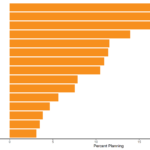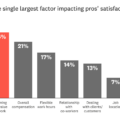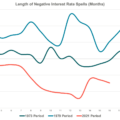Mapping The Drivers of Home Service Spending: Demographics
2020 marks the once in a decade arrival of the Census, where every individual in the United states is tallied by the U.S. Census Bureau.
Capturing these demographic attributes of the population is important not only because they determine how government programs and congressional seats are allotted, but also because they provide an open and public insight into how the country is structured and allow researchers to understand what’s driving long-term underlying trends, like the use of housing and home services.
Part 1: Demographics
In this map, we look at personal attributes on an individual level that vary across states.
Demographics are important to understanding how home services evolve because the stage of life one is in, the socioeconomic changes one is going through, and the community in which one lives, all shape and drive the demand for how one keeps their home maintained and updated.
Age
Age is a key driver of home service spending. The stage of life one is in determines one’s household needs both because of stylistic differences that trend and vary across generations, but also because of the key needs associated with the milestones that shape major moments at each stage of our lives.
For example, if one is younger and recently married, the focus on home spending might be raising the value of the property for a high return on investment and optimizing the home for raising of young children. If someone is a little older, the focus might be on entertaining and providing plenty of room for teenagers.
Youngest:
- Utah 33.5
- Texas, 35.9
- Alaska, 36
- DC, 36.6
- Georgia, 37.3
Oldest:
- Maine, 43.0
- Vermont, 41.8
- Florida, 41.6
- West Virginia, 41.4
- New Hampshire, 41.3
Income
Income predicts a range of attributes about oneself. Within home spending, higher incomes are associated not only with a higher capacity to spend on home services, but also with a geographic tendency for higher prices of home services as well.
These are the states with the highest and lowest individual incomes among adults:
Highest Incomes:
- DC, $54,018
- New Jersey, $42,803
- Massachusetts, $41,655
- Connecticut, $41,321
- Maryland $41,009
Lowest Incomes:
- Mississippi $21,983
- West Virginia $22,257
- New Mexico, $22,655
- Arkansas $24,047
- Alabama $24,623
Divorce Rate
Divorces can be traumatic experiences for couples and children alike. They can also dramatically upend how a family lives, with assets being divided, custody being shared, and housing arrangements invariably changing.
These are the states with the highest and lowest percent of divorced people:
Most:
- Montana 10.73%
- Florida 10.95%
- West Virginia 11.35%
- Nevada 11.54%
- Maine 12.77%
Least:
- DC, 6.78%
- Utah 6.84%
- New Jersey 6.95%
- Hawaii 7.17%
- New York 7.27%
Commute Times
For most of us, our work is the primary way we support and pay for our housing needs. Commute times, the average length of time someone spends getting to and from work, can also shape the service demands around how we live. Commuting characteristics shape not only the average size of our homes – as people trade space for convenience – it can also shape our need for garage space, home gyms, and other amenities that vary between urban, suburban, and rural areas.
Shortest:
- Wyoming, 15.9 minutes
- South Dakota, 17.1 Minutes
- North Dakota, 17.1 Minutes
- Montana, 18.1 Minutes
- Iowa, 19.1 Minutes
Longest:
- Massachusetts, 30.5 minutes
- District of Columbia, 30.9 minutes
- New Jersey, 32.5 Minutes
- Maryland, 33.3 Minutes
- New York, 34 Minutes
Methodology Notes:
Microdata was sourced from the 2018 American community Survey PUMS, using replicate weights PWGTP.
Divorced rate here is the average number of divorced people, not the percent of marriages that end in divorce.
Income is the average salary income of all adults age 18 and over.







 Press & Media Inquiries
Press & Media Inquiries Angi Economics
Angi Economics